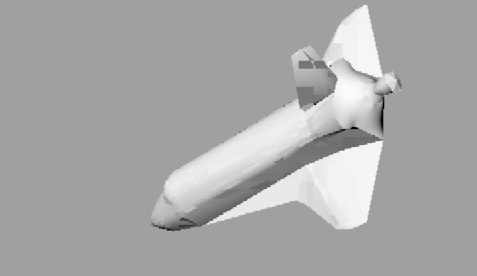In this paper we propose a highly parallelizable numerical method
for time dependent acoustic scattering problems involving
realistic smart obstacles hit by incoming waves having wavelengths
small compared with the characteristic dimension of the obstacles.
A smart obstacle is an obstacle that when hit by an incoming wave
tries to pursue a goal circulating on its boundary a pressure
current. In particular we consider obstacles whose goal is to be
undetectable and we refer to them as furtive obstacles. These
scattering problems are modelled as optimal control problems for the wave equation.
We validate the method proposed to solve the optimal control problem
considered on some test problems where a "smart" simplified
version of the NASA space shuttle is hit by incoming waves with
small wavelengths compared to its characteristic dimension. That
is we consider test problems with ratio between the characteristic
dimension of the obstacle and wavelength of the time harmonic
component of the incoming wave up to approximately one hundred.
This website contains
animations and virtual reality applications showing some numerical
experiments relative to the problems studied in the paper.
Warning: To see the virtual reality applications
we recommend to use at least the following resources:
- screen resolution: 1024 x 768
- video adapter: 8Mb
- processor: Pentium II or equivalent
We suggest the following VRML clients:
| |
Windows |
Mac |
UNIX/Linux |
| Cortona |
X |
X |
|
| Cosmo Player |
X |
X |
|
| OpenVRML (Under Developement) |
|
|
X |
| FreeWRL (Under Developement) |
|
|
X |
Note that in a Unix/Linux environment the clients OpenVRML
and FreeWRL allow the visualization of virtual objects but not the
visualization of virtual scenes.
Time dependent scattering from a simplified version of the NASA space shuttle
Remark.
In the following animations the time values shown in eighteen frames
are t=4(-j(13/21)+6.5)/c, j=1,2,...,18,
c=331.45 meters/seconds
Time dependent scattering from the simplified version of the Nasa space shuttle
Data: incident wave ui=exp(-4(z+ct)2),
c=331.45 meters/seconds (sound speed in the air), length of
the simplified version of the NASA space
shuttle L=56.14 meters. The z axis is the symmetry axis of the main body of the obstacle.
Let RT be the ratio between the characteristic dimension of the obstacle
and the wavelength of the time harmonic components of the incident wave considered.
The ratio RT in this experiment ranges approximately between 3 to 28. Remind that the incident wave
is approximated with a finite linear combination of time harmonic plane wave.
Animation 1: Click here to see the scattering phenomenon (Virtual scene: VRML file)
Entry n.

